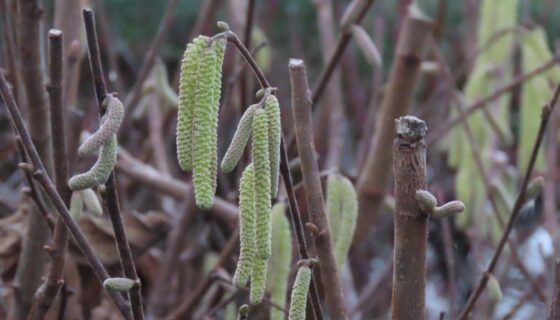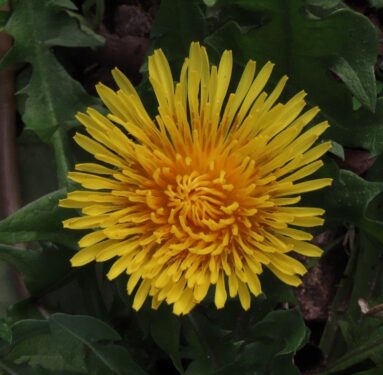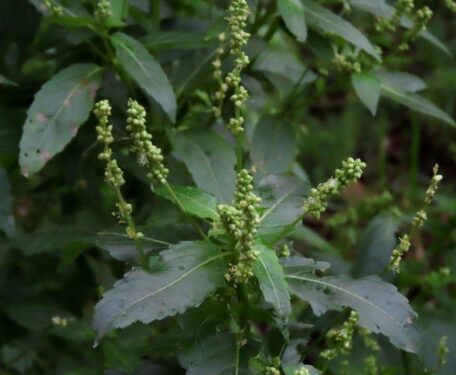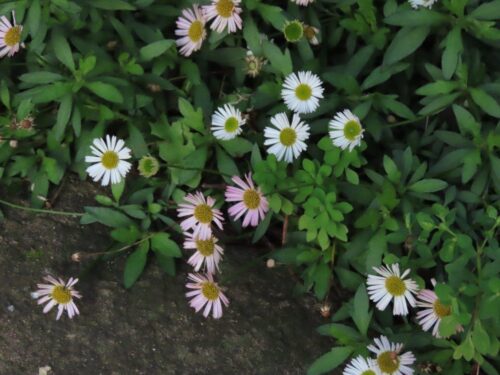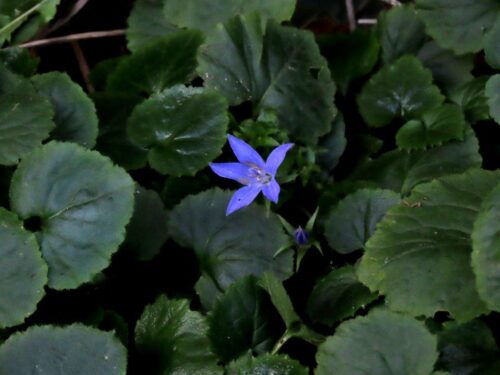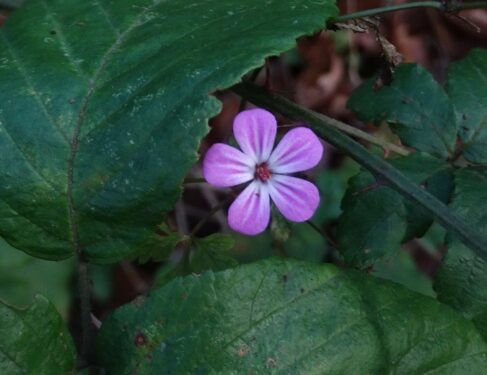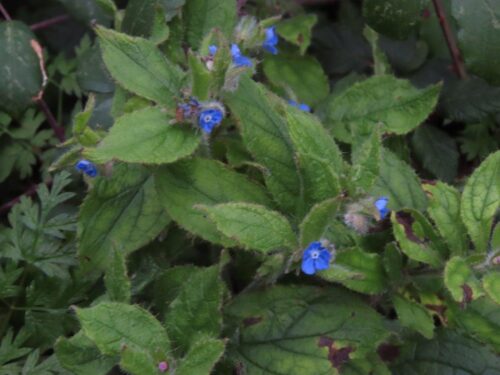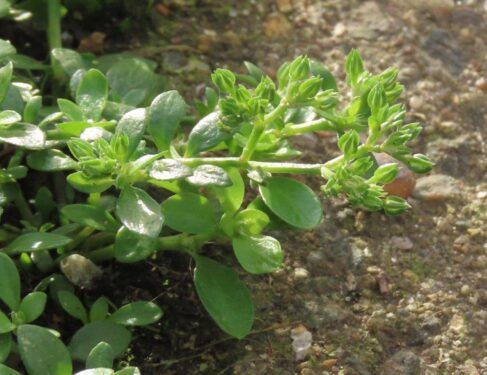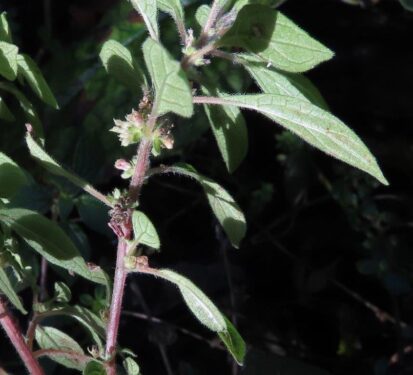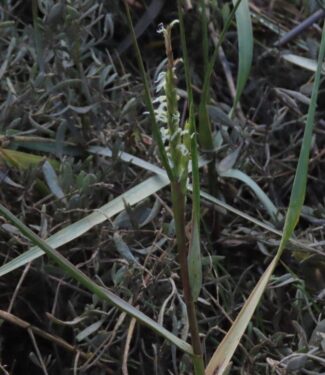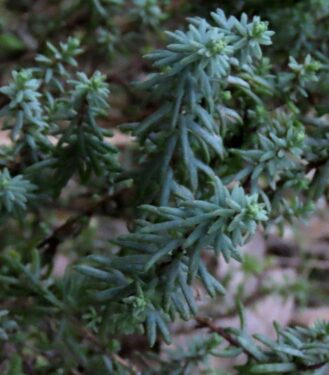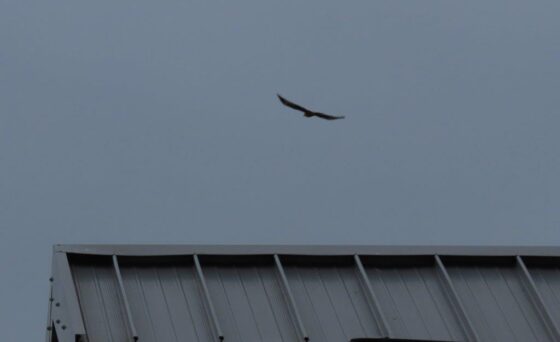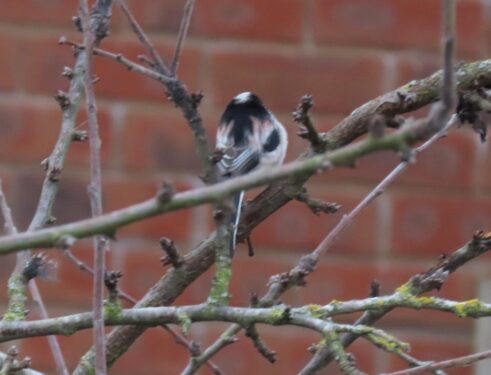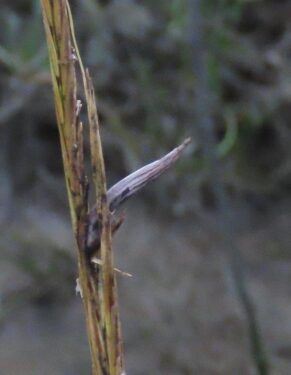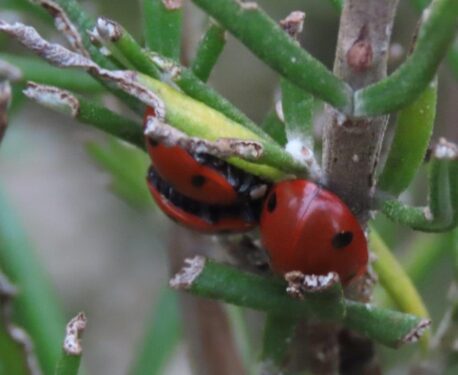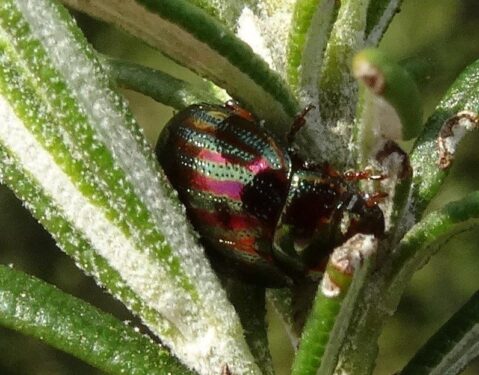Each year, the Botanical Society of Britain & Ireland organises a New Year plant hunt, encouraging botanists and other interested folk out of their midwinter slumber to see what plants are flowering. As has become tradition, we contributed to the national picture by arranging a walk around Wivenhoe Waterfront on New Year’s Day. And we would like to thank the keen, sharp-eyed group who helped us spot things! All data collected in this citizen science project have been fed into the national record of what is flowering at this time: for more information see New Year Plant Hunt – Botanical Society of Britain & Ireland (bsbi.org). It is good to be part of a bigger project to aid learning about how British and Irish wildflowers are responding to climate change.
On our recce a few days ago it soon became apparent that there were more species flowering than last year when December frosts curtailed the show. The ‘usual suspects’ included Gorse, Hazel, White Dead-nettle, Groundsel, Annual Mercury, Shepherd’s-purse and Common Chickweed, with Daisy and Dandelion lighting up many a patch of grass.
Some of the older walls and brickwork had patches of Mexican Fleabane, Trailing Bellflower and Ivy-leaved Toadflax, while other showy plants included Green Alkanet and Herb-Robert, and more surprisingly both Cow Parsley and Wild Carrot.
Along the waterfront itself, in the cracks of the block paving, Four-leaved Allseed is more abundant than it has ever been since its arrival here some five years ago. Careful searching was needed to find evidence of actual flowers – they are rather subtle even at the best of times! Similarly, Guernsey Fleabane and Pellitory-of-the-wall only got added to our flowering list after close scrutiny.
Finally on the salt-marshes, Common Cord-grass dangled its naughty bits wantonly to the wind, but the best botanical find of the day we couldn’t count: a single non-flowering sprig of Shrubby Sea-blite, a good couple of kilometres further up the estuary than we have ever found before.
All in all, 34 species in flower (for a full list, see here NYD plant hunt 2024) in the wild was a good haul, certainly well above the 23 in 2023 and almost up to our highest-ever count of 35 in 2022, although ‘good’ is a bit of a loaded term – many of these plants should not be flowering now, and are doing so only because of the harm we have inflicted upon our climate…
Naturally, although a botanical trip, we didn’t overlook other wildlife. The song of Robins was a feast for the ears, a party of Long-tailed Tits trilled around a garden, a Red Kite drifted low and slow overhead, the fruiting bodies of Cord-grass Ergot were erupting from their host-plant, and we were pleased to find several 7-spot Ladybirds and Rosemary Beetles, those mobile jewels, on a Rosemary bush, mostly paired and in the process of making more beetles. All a very hopeful sign for a wildlife-filled 2024!
